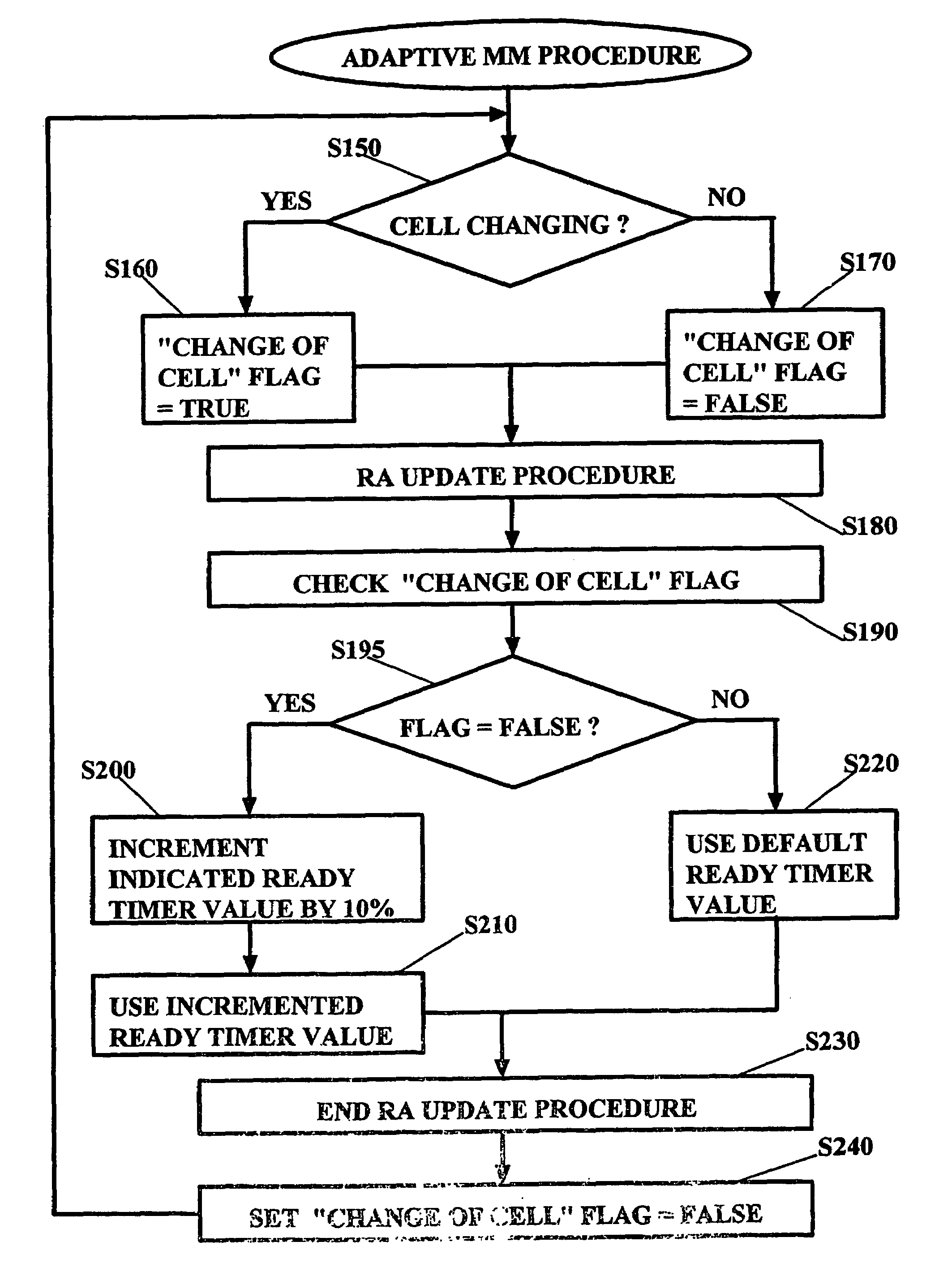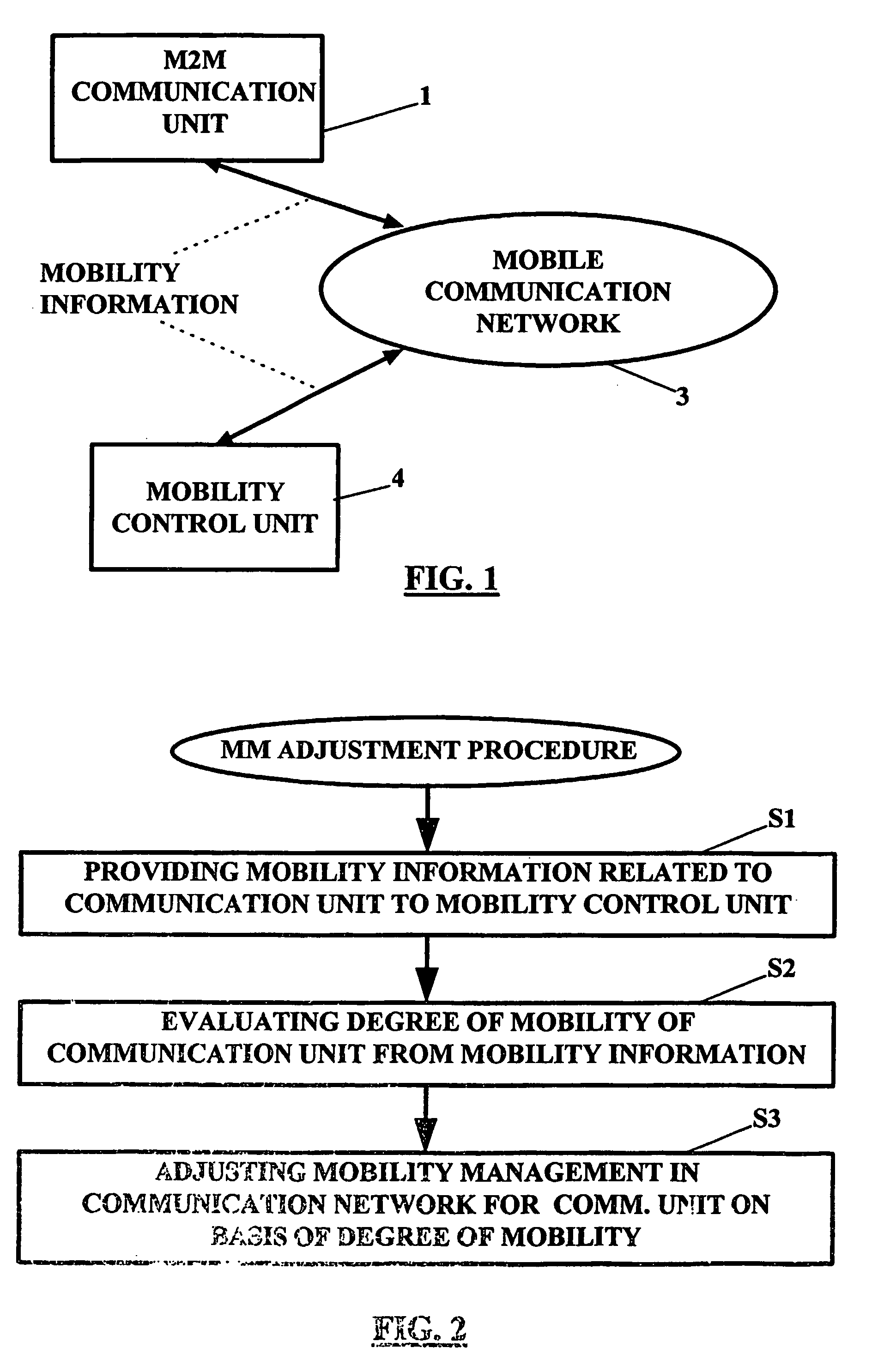Method, device and system for adjusting mobility management
a technology of mobility management and mobility management, applied in the field of mobility management adjustment, can solve problems such as the increase of network signaling load, and achieve the effect of improving the mobility management adjustment in the mobile communication network
- Summary
- Abstract
- Description
- Claims
- Application Information
AI Technical Summary
Benefits of technology
Problems solved by technology
Method used
Image
Examples
first embodiment
[0066]The second possibility is that the SGSN does not accept this value as it would suspend mobile reachable timer 46 which is the only way to detect that an M2M communication unit is not present anymore. In this case, the SGSN 40 (or the mobility management adjustment device comprised therein) may proceed as described in the first embodiment, i.e. adjusting the MM timers to the maximum value (steps S40, S60 to S90 of FIG. 4).
[0067]It should be noted that a benefit of this previous embodiment is that this MM adjustment can be existing with the requested READY timer value which are already part of the protocol for 2G and 3G GPRS (see, e.g., 3GPP 24.008). It is to be noted that this ready timer may be sent also in 3G protocols (due to interoperability with 2G even is 3G does not have a ready state), and so this timer (value) may also be used to indicate the degree of mobility in a 3G system.
second embodiment
[0068]A second embodiment is that the MS (i.e. the M2M communication unit) reports its mobility to the network (i.e. to the mobility control unit) with a new explicit parameter. The following description is applicable to mobile connected to a MSC. However, the same ideas apply also to other system such as GPRS.
[0069]A first option is to indicate the mobility through an explicit mobility management parameter “mobility indication”. A first simple solution is to indicate only 2 values (static or normal) for this parameter. This value is then configured in the MS and detected in the mobility control unit. A second alternative is that this parameter contain a more complex mobility value (e.g. on a scale from 1 to 10, 1 being static, and 10 fast moving). This value is derived in a standard way by the MS. For example, the MS use the number of cell changes in the last hours (up to a few days). Preferably exponential weight should be applied to give more weight to recent cell changes than to...
third embodiment
[0070]A third embodiment is an “adaptive Mobility Management” which is described also with reference to FIGS. 6 and 7. According to this embodiment, a core network node with a mobility control unit adapted to execute such an “adaptive MM” is used in the mobile communication network. The concept of adaptive mobility management is that the core network (e.g. by means of the mobility control unit) monitors the degree of mobility of the MS without support of the MS (i.e. without an indication from the MS), and adapt its MM behavior (especially MM elements such as MM timers) based on the detected degree of mobility. This third preferred implementation is described in more details for a 2G SGSN used by GPRS system connected to a GSM radio network (such as shown in FIG. 3). The 2G SGSN comprises a default periodic RA update timer value which is indicated to the MS after an attach or a non-periodic RA update. This means, as shown in FIG. 6, when a RA update request is received by the SGSN, ...
PUM
 Login to View More
Login to View More Abstract
Description
Claims
Application Information
 Login to View More
Login to View More - R&D
- Intellectual Property
- Life Sciences
- Materials
- Tech Scout
- Unparalleled Data Quality
- Higher Quality Content
- 60% Fewer Hallucinations
Browse by: Latest US Patents, China's latest patents, Technical Efficacy Thesaurus, Application Domain, Technology Topic, Popular Technical Reports.
© 2025 PatSnap. All rights reserved.Legal|Privacy policy|Modern Slavery Act Transparency Statement|Sitemap|About US| Contact US: help@patsnap.com



